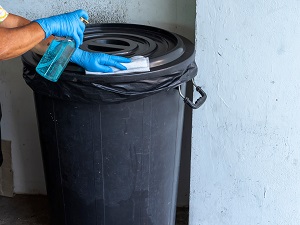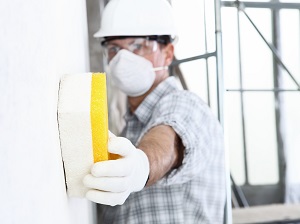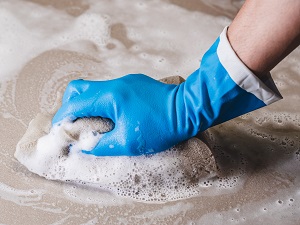Viruses that make people sick, including the virus that causes COVID-19 can land on surfaces. It’s possible for people to become infected if they touch those surfaces and then touch their nose, mouth, or eyes.

In most situations, the risk of infection from touching a surface is low. Cleaning and disinfecting surfaces can further reduce the risk of infection.
If a sick person or someone who tested positive for COVID-19 has been in your facility within the last 24 hours, you should clean and disinfect the spaces they occupied.
The best way to prevent illness is to avoid being exposed.
The most reliable way to prevent infection from surfaces is to regularly wash hands with soap and water or use alcohol-based hand sanitizer. Wash your hands often with soap and water for at least 20 seconds.
If soap and water are not readily available, use an alcohol-based hand sanitizer with at least 60% alcohol. Cover all surfaces of your hands and rub them together until they feel dry.
Avoid touching your eyes, nose, and mouth with unwashed hands.

Cleaning with products containing soap or detergent reduces germs on surfaces by removing contaminants and decreases risk of infection from surfaces. If no one sick has been in a space, cleaning once a day is usually enough to remove virus that may be on surfaces. This also helps maintain a healthy facility.
Disinfecting kills any remaining germs on surfaces, which further reduces any risk of spreading infection.
You may want to either clean more frequently or choose to disinfect in addition to cleaning in shared spaces if the space:
- is a high traffic area, with a large number of people
- is poorly ventilated
- does not provide access to handwashing or hand sanitizer
- is occupied by people at increased risk for severe illness

Cleaning removes germs and dirt from surfaces. You can use soap and water to clean surfaces. This doesn't always kill germs, but removing them lowers their numbers. It is suggested to clean surfaces before you disinfect them.
Disinfecting kills germs on surfaces. Disinfectant chemicals are stronger than soap but do not necessarily clean visibly dirty surfaces or remove germs. Killing germs on a surface after cleaning further lowers the risk of spreading infection.
Normal routine cleaning with soap and water alone can reduce risk of exposure and is a necessary step before you disinfect dirty surfaces. Read all manufacturer’s instructions for the cleaning and disinfection products you will use.
If tools or equipment must be shared, it is recommended that alcohol-based wipes be used to clean the items before and after use. When cleaning tools and equipment, consult manufacturer recommendations for proper cleaning techniques and restrictions that might apply.
Most surfaces and objects will just need normal routine cleaning. Surfaces and objects that are not frequently touched should be cleaned and do not require additional disinfection.

Examples of frequently touched surfaces and objects that may require routine cleaning or disinfection include:
- Desks, tables, chairs
- Phones, keyboards, tablets, touch screens
- Door handles, door locks, light switches
- Break room surfaces, handles, appliances
- Work benches, equipment
- Toilets, sinks, faucets, floors
- Printers, copiers, clip boards
- Remote controls
- Hand rails, elevator buttons
- Trash can lids and handles
- Hand tools, power tool grips
- Bin or container handles
- Man lift guard rails, gates and controls
- Alarm key pads, buttons, switches, controls
- Heavy equipment handles, seats, steering wheel, controls

To disinfect, use an EPA-approved disinfectant. If disinfectants are in short supply, or not available, alternative bleach or alcohol solutions can be used.
For a bleach solution, dilute 1/3 cup bleach per gallon of water. Bleach solutions will be effective for disinfection up to 24 hours.
Ensure alcohol solutions have at least 70% alcohol.
If your disinfectant product label does not specify that it can be used for both cleaning and disinfection, clean visibly dirty surfaces with soap or detergent before disinfection.
Always follow the directions on the label to ensure safe and effective use of the product. The label will include safety information and application instructions. Check the product label to see what PPE (such as gloves, glasses, or goggles) is required based on potential hazards. Use only the amount recommended on the label.
If diluting with water is indicated for use, use water at room temperature (unless stated otherwise on the label). Label diluted cleaning or disinfectant solutions.
Use disinfectants appropriate for the surface. Ensure adequate ventilation (for example, open windows). Do not mix products or chemicals.

.jpg)

.jpg)